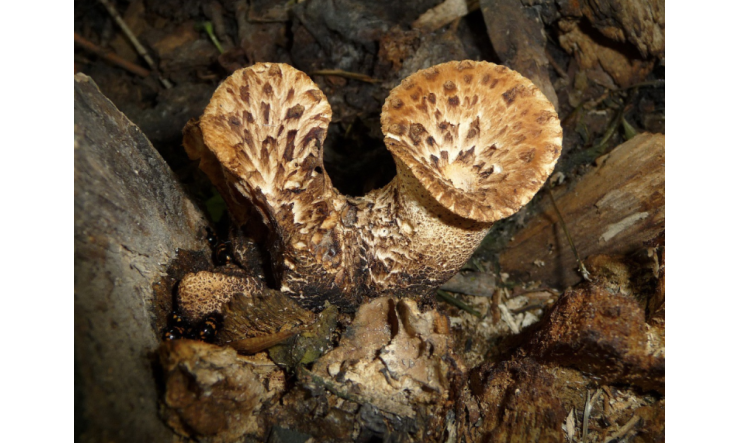Several medicinal plants and mushrooms have been used since ancient times to combat aging, but even more so; let's discover some of their properties and benefits here:
Maca (Lepidium meyenii)
Maca roots are popular dietary supplements used to treat a variety of conditions traditionally described as improving metabolic and health conditions. One study evaluated maca root total methanolic extract as a potential nutraceutical for managing complications of metabolic syndrome. The results suggest that maca root total methanolic extract improves metabolic syndrome by reducing hyperglycemia, hyperlipidemia, inflammation, and oxidative stress. 1
Maca is endowed with anti-inflammatory activity and rich in protein. In a study, maca protein extract from maca root was explored for its effect and mechanism on improving dextran sodium sulfate-induced inflammatory bowel disease in mice. The results indicated that maca protein intervention alleviated clinical symptoms and colon tissue damage of mice, inhibited the expression of inflammatory factors, and could modulate the composition of their intestinal microbiota. Overall, maca protein can alleviate colitis by comprehensively regulating the intestinal microbiota and inflammatory response. 2
1. Mohamed SM, Shalaby MA, El-Shiekh RA, Bakr AF, Kamel S, Emam SR, El-Banna HA. Maca roots: A potential therapeutic in the management of metabolic disorders through the modulation of metabolic biochemical markers in rats fed high-fat high-carbohydrate diet. J Ethnopharmacol. 2024 Mar 1; 321:117533. doi: 10.1016/j.jep.2023.117533. Epub 2023 Dec 8. PMID: 38056538.
2. He P, Zhang Y, Chen R, Tong Z, Zhang M, Wu H. The maca protein ameliorates DSS-induced colitis in mice by modulating the gut microbiota and production of SCFAs. Food Function. 2023 Nov 27;14(23):10329-10346. doi:10.1039/d3fo03654e. PMID: 37955225.
Ashwagandha (Withania somnifera)
Ashwagandha has been used since ancient times to promote physical and mental health, to provide defense against disease and adverse environmental factors, and to halt the aging process. 1
Ashwagandha is rich in constituents belonging to chemical classes such as alkaloids, saponins, flavonoids, phenolic acids and withanolides; they offer multiple properties, such as: 2,3
- Neuroprotective
- Immunomodulatory
- Adaptogen
- Anti-stress
- For bone health
- Promising anticancer drug
1. Bhattacharya SK, Bhattacharya A, Sairam K, Ghosal S. Anxiolytic-antidepressant activity of Withania somnifera glycowithanolides: an experimental study. Phytomedicine. 2000 Dec;7(6):463-9. doi: 10.1016/S0944-7113(00)80030-6. PMID: 11194174.
2. Akhgarjand C, Asoudeh F, Bagheri A, Kalantar Z, Vahabi Z, Shab-Bidar S, Rezvani H, Djafarian K. Does Ashwagandha supplementation have a beneficial effect on the management of anxiety and stress? A systematic review and meta-analysis of randomized controlled trials. Phytother Res. 2022 Nov;36(11):4115-4124. doi:10.1002/ptr.7598. Epub 2022 Aug 25. PMID: 36017529.
3. Yadav N, Tripathi S, Sangwan NS. Phyto-therapeutic potential of Withania somnifera: Molecular mechanism and health implications. Phytother Res. 2024 Feb 6. doi: 10.1002/ptr.8100. Epub ahead of print. PMID: 38318763.
Cordyceps or Fa jiao chong cao jun (Paecilomyces hepialid)
Cordyceps is one of the most famous traditional Chinese medicines and medicinal mushrooms. Its many bioactive components include cordycepin, cordycepic acid, ergosterol, polysaccharides, nucleosides, and peptides.1,2
Cordyceps has several bioactivities, such as activities:
- Antitumor
- Immunomodulatory
- Antioxidant
- Anti-inflammatory
- Improving sexual and reproductive function
- Hypoglycemic
- Anti-fatigue
- Adaptogen (anti-stress)
- Ability to improve endurance and strength
- Protective effect on the kidneys and liver
- Modulating effect on the intestinal system
1. Lin B, Li S. Cordyceps as an Herbal Drug. In: Benzie IFF, Wachtel-Galor S, editors. Herbal Medicine: Biomolecular and Clinical Aspects. 2nd edition. Boca Raton (FL): CRC Press/Taylor & Francis; 2011. Chapter 5. Available from: https://www.ncbi.nlm.nih.gov/books/NBK92758/
2. Yue K, Ye M, Zhou Z, Sun W, Lin X. The Cordyceps genus: a chemical and pharmacological review. J Pharm Pharmacol. 2013 Apr;65(4):474-93. doi: 10.1111/j.2042-7158.2012.01601. x. Epub 2012 Oct 23. PMID: 23488776.
Lion's Mane or Hedgehog Hydnum (Hericium erinaceus)
This popular medicinal edible mushroom has a long history of use in traditional Chinese medicine as well as in other oriental countries. It is rich in phenol, flavonoids and ascorbic acids thus providing numerous activities, such as:1,2,3,4
- Antioxidant
- Antimicrobial
- Antiproliferative
- Chelating
- Antibacterial
- Anticancer
- Hypolipidemic
- Neuroprotective
- Antihypertensive
- Antidiabetic
- Healing
- Effective in improving mild cognitive impairment
- Improve performance speed and reduce stress
1. Ghosh S, Nandi S, Banerjee A, Sarkar S, Chakraborty N, Acharya K. Prospecting medicinal properties of Lion's mane mushroom. J Food Biochem. 2021 Jun 24: e13833. doi:10.1111/jfbc.13833. Epub ahead of print. PMID: 34169530.
2. Mori K, Inatomi S, Ouchi K, Azumi Y, Tuchida T. Improving effects of the mushroom Yamabushitake (Hericium erinaceus) on mild cognitive impairment: a double-blind placebo-controlled clinical trial. Phytother Res. 2009 Mar;23(3):367-72. doi:10.1002/ptr.2634. PMID: 18844328.
3. Docherty S, Doughty FL, Smith EF. The Acute and Chronic Effects of Lion's Mane Mushroom Supplementation on Cognitive Function, Stress and Mood in Young Adults: A Double-Blind, Parallel Groups, Pilot Study. Nutrients. 2023 Nov 20;15(22):4842. doi:10.3390/nu15224842. PMID: 38004235; PMCID: PMC10675414.
4. Khan MA, Tania M, Liu R, Rahman MM. Hericium erinaceus: an edible mushroom with medicinal values. J Complement Integr Med. 2013 May 24;10:/j/jcim.2013.10.issue-1/jcim-2013-0001/jcim-2013-0001.xml. doi: 10.1515/jcim-2013-0001. PMID: 23735479.
Astragalus (Astragalus membranaceus)
Astragalus is a tonic and anti-aging herb. The main components of astragalus are polysaccharides, flavonoids, and saponins. Pharmacological research indicates that the component extracted from astragalus can increase telomerase activity and has effects:
- Antioxidant
- Anti-inflammatory
- Immunoregulator
- Anticancer
- Hypolipidemic
- Antihyperglycemic
- Hepatoprotective
- Expectorant
- Diuretic
Astragalus has been associated with a significant anti-aging effect on the immune system. 1
A number of studies have shown that telomerase activation can maintain telomere length, delay aging, and reverse age-related tissue degeneration. 2,3
1. Liu P, Zhao H, Luo Y. Anti-Aging Implications of Astragalus Membranaceus (Huangqi): A Well-Known Chinese Tonic. Aging Dis. 2017 Dec 1;8(6):868-886. doi: 10.14336/AD.2017.0816. PMID: 29344421; PMCID: PMC5758356. https://www.ncbi.nlm.nih.gov/pmc/articles/PMC5758356/
2. Jaskelioff M, Muller FL, Paik JH, Thomas E, Jiang S, Adams AC, et al. (2011). Telomerase reactivation reverses tissue degeneration in aged telomerase-deficient mice. Nature, 469:102-106. https://pubmed.ncbi.nlm.nih.gov/21113150/
3. Ait-Ghezala G, Hassan S, Tweed M, Paris D, Crynen G, Zakirova Z, et al. (2016). Identification of telomerase-activating blends from naturally occurring compounds. Altern Ther Health Med, 22 Suppl 2:6-14. https://pubmed.ncbi.nlm.nih.gov/27433836/
Siberian ginseng (Eleutherococcus senticosus)
Siberian ginseng is a plant widely used in China, Japan, Korea and Russia for its beneficial effects on:
- Improving memory
- Toning & nourishing the heart
- Tranquilizer
Triterpenoid saponins are among the main constituents of Siberian ginseng. They have been found to play a determined role in the onset of neuritis and have been proposed as a crucial constituent as a therapeutic agent for neuronal diseases. The results provided scientific data for the further development of Siberian ginseng stems and triterpenoid saponins as memory-enhancing agents. 1
Triterpenoid saponins as well as phenylpropanoids, also bioactive components have demonstrated promising properties such as antioxidant stress, anti-aging, platelet aggregation and antitumor effects. In addition, they show potential to improve glucose metabolism, cardiovascular and immune systems. 2
1. Zhou YX, Luo WJ, Zhou TT, Zhou Y, Li HL, Sun F, Ge YW, Piao XH. Precursor ions-guided comprehensive profiling of triterpenoid saponins from the Eleutherococcus senticosus stems and their neuroprotective effect evaluation. J Pharm Biomed Anal. 2024 Jan 20; 238:115849. doi: 10.1016/j.jpba.2023.115849. Epub 2023 Nov 7. PMID: 37979523.
2. Sun H, Feng J, Sun Y, Sun S, Li L, Zhu J, Zang H. Phytochemistry and Pharmacology of Eleutherococcus sessiliflorus (Rupr. & Maxim.) SY Hu: A Review. Molecules. 2023 Sep 11;28(18):6564. doi:10.3390/molecules28186564. PMID: 37764339; PMCID: PMC10536541.
Reishi (Ganoderma lucidum)
Reishi is one of the oldest medicinal mushrooms used in Asian regions and is therefore one of the most studied to date. It is widely used for the general promotion of health and longevity. Among its many bioactive compounds are polysaccharides, triterpenes, ganoderic acids, phenols, amino acids, lignin, vitamins, nucleosides, nucleotides, sterols, steroids, proteins and unsaturated fatty acids, and inorganic ions. 1
Reishi has many activities, such as: 2,3,4,5
- Anticancer
- Immunomodulatory
- Antitumor
- Hepatoprotective
- Antiviral
1. Venturella G, Ferraro V, Cirlincione F, Gargano ML. Medicinal Mushrooms: Bioactive Compounds, Use, and Clinical Trials. Int J Mol Sci. 2021 Jan 10;22(2):634. doi:10.3390/ijms22020634. PMID: 33435246; PMCID: PMC7826851.
2. Sliva D. Ganoderma lucidum (Reishi) in cancer treatment. Integra Cancer Ther. 2003 Dec;2(4):358-64. doi:10.1177/1534735403259066. PMID: 14713328.
3. Lin ZB, Zhang HN. Anti-tumor and immunoregulatory activities of Ganoderma lucidum and its possible mechanisms. Acta Pharmacol Sin. 2004 Nov;25(11):1387-95. PMID: 15525457.
4. Ahmad MF, Ahmad FA, Zeyaullah M, Alsayegh AA, Mahmood SE, AlShahrani AM, Khan MS, Shama E, Hamouda A, Elbendary EY, Attia KAHA. Ganoderma lucidum: Novel Insight into Hepatoprotective Potential with Mechanisms of Action. Nutrients. 2023 Apr 13;15(8):1874. doi:10.3390/nu15081874. PMID: 37111092; PMCID: PMC10146730.
5. Ahmad MF, Ahmad FA, Khan MI, Alsayegh AA, Wahab S, Alam MI, Ahmed F. Ganoderma lucidum: A potential source to surmount viral infections through β-glucans immunomodulatory and triterpenoids antiviral properties. Int J Biol Macromol. 2021 Sep 30; 187:769-779. doi: 10.1016/j.ijbiomac.2021.06.122. Epub 2021 Jun 29. PMID: 34197853.
Amla (Phyllanthus emblica)
This tree, native to regions of India and Southeast Asia, produces fruits rich in bioactive compounds. Scientific evidence indicates that polyphenols are central components of the fruits and other sections of the amla tree, along with vitamin C. The rich composition of polyphenols and vitamin C gives it significant activity and confirms its potential role in health promotion and disease prevention. 1
Among its other potential health activities are: 2
- Antihyperlipidemic
- Antidiabetic
- Anticancer
- Protector
- Anti-inflammatory
- Digestive
- Neurological
1. Gul M, Liu ZW, Iahtisham-Ul-Haq, Rabail R, Faheem F, Walayat N, Nawaz A, Shabbir MA, Munekata PES, Lorenzo JM, Aadil RM. Functional and Nutraceutical Significance of Amla (Phyllanthus emblica L.): A Review. Antioxidants (Basel). 2022 Apr 22;11(5):816. doi:10.3390/antiox11050816. PMID: 35624683; PMCID: PMC9137578.
2. Krishnaveni M, Mirunalini S. Therapeutic potential of Phyllanthus emblica (amla): the ayurvedic wonder. J Basic Clin Physiol Pharmacol. 2010;21(1):93-105. doi: 10.1515/jbcpp.2010.21.1.93. PMID: 20506691.
Rhodolia (Rhodiola rosea)
Rhodiola rosea L. is a popular plant whose roots and rhizomes have been used since ancient times to relieve stress, fatigue, and mental and physical disorders.
Its phenolic compounds: the phenylpropanoids rosavin, rosarin and colophony, tyrosol glucoside salidroside and tyrosol, are responsible for its biological action, thus allowing it to carry out activities: 1,2,3
- Antioxidant
- Immunomodulatory
- Anti-aging
- Anti-fatigue
- To improve mental and cognitive functions
- To protect the central nervous system and the heart in case of stress
- Lipid-lowering drugs
- Analgesic
- Antiradiation
- Antitumor
- Antidepressant
- Anti-inflammatory
- To improve the activities of intestinal digestive enzymes, the inflammatory response and the expression of genes related to the intestinal barrier, as well as microbiota dysbiosis
1. Bernatoniene J, Jakstas V, Kopustinskiene DM. Phenolic Compounds of Rhodiola rosea L. as the Potential Alternative Therapy in the Treatment of Chronic Diseases. Int J Mol Sci. 2023 Jul 31;24(15):12293. doi:10.3390/ijms241512293. PMID: 37569669; PMCID: PMC10418374.
2. Mueller JK, Muller WE. Multi-target drugs for the treatment of cognitive impairment and fatigue in post-COVID syndrome: focus on Ginkgo biloba and Rhodiola rosea. J Neural Transm (Vienna). 2024 Mar;131(3):203-212. doi:10.1007/s00702-024-02749-3. Epub 2024 Feb 12. PMID: 38347175; PMCID: PMC10874325.
3. Zheng L, Wang Z, Zhang B, Yan L, Wang P, Zhao C, Wang J, Wang Y, Lin H, Qiu L, Zhou C. Rhodiola rosea L. improved intestinal digestive enzyme activities, inflammatory response, barrier and microbiota dysbiosis in Lateolabrax maculatus juveniles fed with high-carbohydrate diets. Fish Shellfish Immunol. 2024 Mar; 146:109362. doi: 10.1016/j.fsi.2024.109362. Epub 2024 Jan 11. PMID: 38218423.
Red ginseng (Panax ginseng)
Did you know that among anti-aging food supplements, ginseng, with its richness in nutrients, helps fight against skin aging?
Its content of amino acids, minerals, ginsenoids, antioxidants, vitamins B, C and E would make it a supplement of choice for having a luminous complexion, obtaining firmness and elasticity of the skin.
A 2016 study on the antioxidant properties of Panax ginseng included in a herbal blend aimed to examine anti-aging activity in both human dermal fibroblasts under UVB irradiation using an assay and in healthy human skin using non-invasive measurements. The results of this study suggest that ginseng may prevent skin aging by inhibiting wrinkle formation and increasing skin hydration. 1
To date, there are numerous studies on the pharmacological activities of ginseng extract and ginsenosides against skin aging. 2,3,4,5
1. Eunson Hwang, Sang-Yong Park, Chang Shik Yin, Hee-Taek Kim, Yong Min Kim and Tae Hoo Yi. Antiaging effects of the mixture of Panax ginseng and Crataegus pinnatifida in human dermal fibroblasts and healthy human skin. J Ginseng Res. 2017 Jan; 41(1): 69–77. 2016 Jan 12. doi: 10.1016/j.jgr.2016.01.001 PMCID: PMC5223080 PMID: 28123324 https://www.ncbi.nlm.nih.gov/pmc/articles/PMC5223080/
2. Eunson Hwang, Taek Hwan Lee, Sang-Yong Park, Tae Hoo Yi, Sun Yeou Kim. Enzyme-modified Panax ginseng inhibits UVB-induced skin aging through the regulation of procollagen type I and MMP-1 expression. Food Funct.2014 Feb;5(2):265-74. doi:10.1039/c3fo60418g. https://pubmed.ncbi.nlm.nih.gov/24281186/
3. Park HJ, Kim DH, Park SJ, Kim JM, Ryu JH Ginseng in traditional herbal prescriptions. J Ginseng Res. 2012; 36:225–241. https://pubmed.ncbi.nlm.nih.gov/23717123/
4. Hong CE, Lyu SY Anti-inflammatory and antioxidative effects of Korean red ginseng extract in human keratinocytes. Immune Netw. 2011; 11:42–49. https://pubmed.ncbi.nlm.nih.gov/21494373
5. Kang TH, Park HM, Kim YB, Kim H., Kim N., Do JH, Kang C., Cho Y., Kim SY Effects of red ginseng extract on UVB irradiation-induced skin aging in hairless mice. J Ethnopharmacol. 2009; 123:446–451. https://pubmed.ncbi.nlm.nih.gov/19501277/
And the spices that complete the Mushrooms & Adaptogens formula
Turmeric ( Curcuma longa )
The benefit of protective compounds like curcumin is that they help the body fight the damaging effects of cellular oxidation. Most of these benefits can therefore be attributed to its antioxidant and anti-inflammatory effects. 1,2
1. Hewlings SJ, Kalman DS. Curcumin: A Review of Its Effects on Human Health. Foods. 2017 Oct 22;6(10):92. doi:10.3390/foods6100092. PMID: 29065496; PMCID: PMC5664031.
2. Panahi Y, Hosseini MS, Khalili N, Naimi E, Majeed M, Sahebkar A. Antioxidant and anti-inflammatory effects of curcuminoid-piperine combination in subjects with metabolic syndrome: A randomized controlled trial and an updated meta-analysis. Clin Nutr. 2015 Dec;34(6):1101-8. doi: 10.1016/j.clnu.2014.12.019. Epub 2015 Jan 7. PMID: 25618800.
Ceylon cinnamon ( Cinnamomum verum )
Cinnamon is one of the most widely used spices in the world, containing many compounds that may have positive effects on health, such as polyphenols, antioxidants, etc. 1,2
Its effects:
- Antioxidants
- Anti-inflammatories
- Antidiabetics
- Antimicrobials
- Anticancer
1. Hariri M, Ghiasvand R. Cinnamon and Chronic Diseases. Adv Exp Med Biol. 2016; 929:1-24. doi:10.1007/978-3-319-41342-6_1. PMID: 27771918.
2. Sharma, UK, Sharma, AK & Pandey, AK Medicinal attributes of major phenylpropanoids present in cinnamon. BMC Complement Altern Med 16, 156 (2016). https://doi.org/10.1186/s12906-016-1147-4
Cardamom ( Elettaria cardamomum )
Cardamom has beneficial effects in the treatment of metabolic syndrome. 1,2 Among its broad-spectrum activities, we also find effects:
- Antihypertensives
- Antioxidants
- Lipid modifiers
- Anti-inflammatories
- Anti-atherosclerotics
- Antithrombotics
- Hepatoprotectors
- Cholesterol-lowering drugs
- Anti-obesity
- Antidiabetics
1. Yahyazadeh R, Ghasemzadeh Rahbardar M, Razavi BM, Karimi G, Hosseinzadeh H. The effect of Elettaria cardamomum (cardamom) on the metabolic syndrome: Narrative review. Iran J Basic Med Sci. 2021 Nov;24(11):1462-1469. doi: 10.22038/IJBMS.2021.54417.12228. PMID: 35317114; PMCID: PMC8917848.
2. Delgadillo-Puga C, Torre-Villalvazo I, Cariño-Cervantes YY, García-Luna C, Soberanes-Chávez P, de Gortari P, Noriega LG, Bautista CJ, Cisneros-Zevallos L. Cardamom (Elettaria cardamomum (L.) Maton) Seeds Intake Increases Energy Expenditure and Reduces Fat Mass in Mice by Modulating Neural Circuits That Regulate Adipose Tissue Lipolysis and Mitochondrial Oxidative Metabolism in Liver and Skeletal Muscle. Int J Mol Sci. 2023 Feb 15;24(4):3909. doi:10.3390/ijms24043909. PMID: 36835337; PMCID: PMC9960522.
Clove ( Syzygium aromaticum )
Cloves are particularly noteworthy for their richness in antioxidant compounds and their high polyphenol content, which is among the highest, making them stand out from other spices. 1,2
Among other things, its richness in eugenol, an anti-inflammatory compound, can protect the liver. 3
1. Cortés-Rojas DF, de Souza CR, Oliveira WP. Clove (Syzygium aromaticum): a precious spice. Asian Pac J Trop Biomed. 2014 Feb;4(2):90-6. doi: 10.1016/S2221-1691(14)60215-X. PMID: 25182278; PMCID: PMC3819475.
2. Shan B, Cai YZ, Sun M, Corke H. Antioxidant capacity of 26 spice extracts and characterization of their phenolic constituents. J Agric Food Chem. 2005 Oct 5;53(20):7749-59. doi:10.1021/jf051513y. PMID: 16190627.
3. Ali S, Prasad R, Mahmood A, Routray I, Shinkafi TS, Sahin K, Kucuk O. Eugenol-rich Fraction of Syzygium aromaticum (Clove) Reverses Biochemical and Histopathological Changes in Liver Cirrhosis and Inhibits Hepatic Cell Proliferation. J Cancer Prev. 2014 Dec;19(4):288-300. doi: 10.15430/JCP.2014.19.4.288. PMID: 25574464; PMCID: PMC4285960.
Note: Hyperlinks to other sites are not updated continuously. It is possible that a link may no longer be found. Please use the search tools to find the desired information.
*Maison Jacynthe disclaims all liability. All information contained in this article is not intended to replace justified allopathic treatment or to disregard the expertise of the medical profession. It is up to each individual to take charge of their own health, to inform themselves, and to make the necessary changes to improve their condition. Therapeutic supervision by a qualified health professional is strongly recommended.


































































Leave a comment